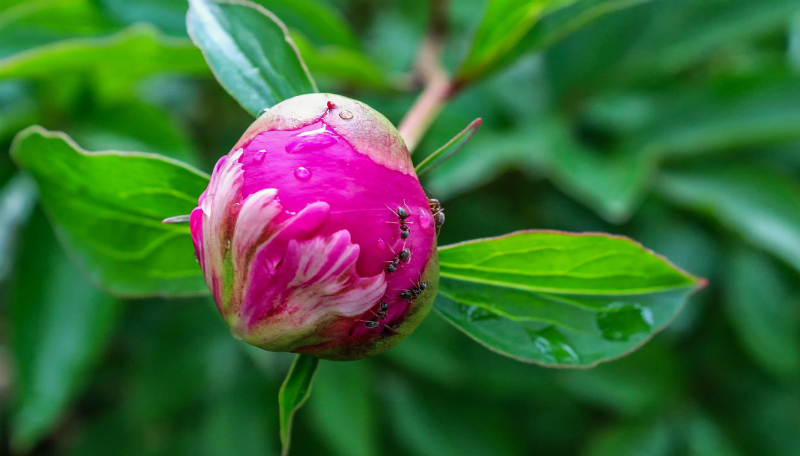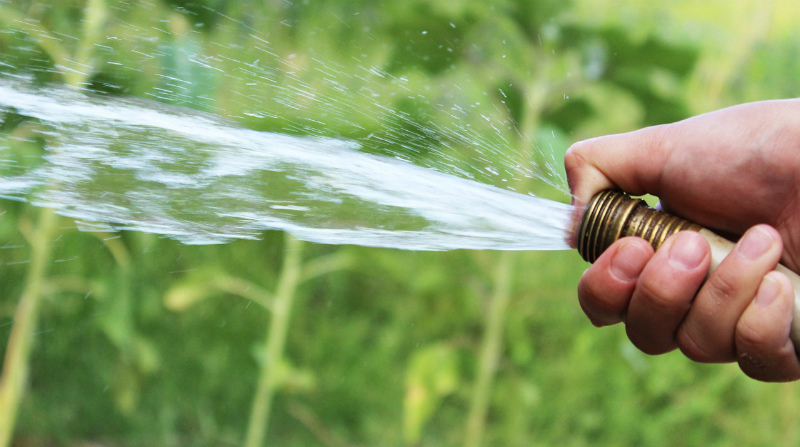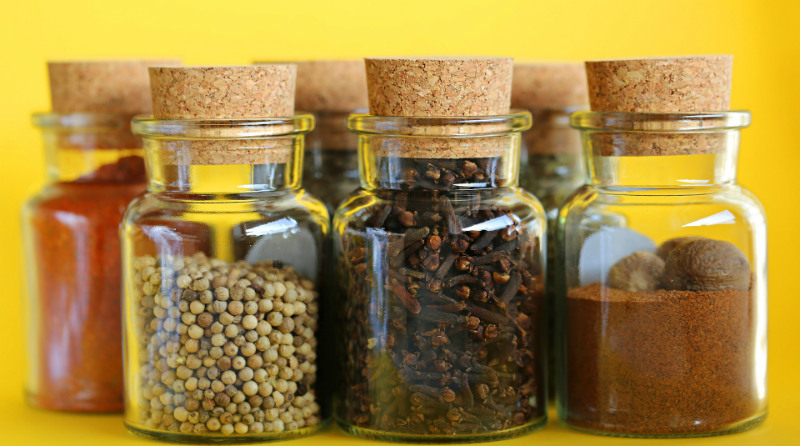Table of Contents
Ants like sweet things, so there’s no doubt that one of their main targets are your flowers. Be it a flower pot or a flower bed, ants will be everywhere. In this situation, insecticides are out of the picture since it will damage the vegetation. With that, you need to know how to get rid of ants in flower pots naturally.
For this post, we will discuss natural solutions that will drive the ants away from your flowers. Take note that the effects of these methods will vary depending on the type of ants pestering your garden.
The harm that ants bring to flower pots
In gardening, ants are actually helpful in aerating the soil and decomposing matter. However, when it comes to flowers, some species can be too invasive.
Some ants will damage the petals of the flowers in pursuit of nectar. It will destroy the beauty of your flowers, not to mention that possible presence of fire ants.
Some home gardeners just give up and get rid of their flower pots. However, this shouldn’t be the case. There are effective solutions that you can try to stop these insects from wreaking havoc on your garden.

Why ants like climbing to flower pots
The main reason here is nectar. Ants feed on sweet and sticky honeydew, which is teeming on your flowering plants.
Moreover, the ants might be looking for a safe shelter. Since your plant is potted, it offers a shield against soil-burrowing predators.
However, you shouldn’t kill the ants right away. Another reason for the ants on your pots is the presence of sap-sucking insects. These insects damage your plants and cause diseases that may lead to the foliage’s death.
In addition, ants love feeding on these sap-sucking insects because of their ‘sweet teeth’. If your flowering plants have young buds and leaves, it becomes more vulnerable to insect pests.
Still, this doesn’t make ants your friend. Once they have eradicated the sap-sucking insects, they will now take over on your plant and start feeding on nectars. Soon enough, they will replace the damaging position of the pests.
What to avoid when repelling ants
Take note that repelling ants from surfaces is different when you’re treating plants. You can’t use just about any insecticide as it can harm the plants and poison the beneficial insects outdoors.
You can exhaust natural solutions as we’ve discussed below or use commercially available plant-friendly insecticides. Make sure that you choose what suits your plant, especially if it’s edible.
Here are more of the points you should keep in mind:
*Putting too much of anything
Regardless if it’s a natural solution or not, applying too much ant repellent can be disadvantageous for your plants. Also, it’s a waste of money for the same repellent effect.
*You don’t mind the entry points in your home
Remember, if you drive the ants away from your flower pots, they will look for another harborage. So before treating the flower pots, make sure that you’ve blocked any possible entry points of the ants into your home.
*You have to be consistent
Ants are resilient insects. As the effects of your plant repellent wear out, the ants will invade your pots again. This is unless you stay consistent with re-applying your chosen agent. Knowing how to get rid of ants in flower pots naturally also include patience.
How to get rid of ants in flower pots naturally
Even if your flower pots are harboring a colony of ants, there are ways to drive the pests away. You can also use the following methods as a proactive solution against the threat of ants.
-Using Diatomaceous Earth (DE) on the top soil
If you’re looking for an ant killer and repellent that’s safe to use on your plants, you’ll never go wrong with diatomaceous earth. This is a mineral-based powder harvested from fossilized marine life. Upon contact, the DE powder will stick to the ants’ body.
From there, their exoskeleton will be damaged by the sharp edges of the microscopic particles. DE is a slow-acting powder, which allows the ants to spread the substance on its colony first. Through that, you can expect exponential death from the crawlers.
Ants that have been in contact with DE will die in approximately 30 minutes.
However, for DE to work, you should keep it dry. After watering the plant or after it rains, you should re-apply the chalk-like substance to keep your plants covered. Nevertheless, this is very safe and it will not damage your flowers.
Moreover, use food-grade DE. This is safer for both the plant and your body. It’s also the better choice if your kids and pets are roaming the area. Lastly, wear a face mask when applying DE. Sniffing this in large amounts will lead to irritations.
-Attracting natural predators
If you’re not apt to sprinkle DE on your flowering plants, you can attract natural insect predators instead.
Beneficial insects like hoverflies and ladybirds feed on ants without damaging your plants. You can attract these natural ant predators by planting pollen-rich and plant nectar foliage.
Once the beneficial insects discover your flower bed, they will keep coming back to it. This gives your plants continuous protection from the ants.
However, you should note that this method only works to a certain extent.
-Sharp hose-watering
For those who don’t have the time and budget to perform the other methods here, you can utilize your watering time to get rid of the ants. Sharp spraying will wash out any sap-suckers and ants on the leaves and stems of your flowering plant.
Take note that this is only ideal for some plants. Otherwise, you might damage the flowers and other parts of the plant.
Anyway, be careful since some flowering plants shouldn’t be overwatered.
If sharp spraying damages the plant, you should consider other options here.

-Applying plant-safe insecticides
If all else fails, your best resort is a plant-based or plant-safe pesticide. You can purchase these on gardening supplies stores. Make sure that you choose one that’s made specifically for plants, and not just a general-purpose spray.
Moreover, plant-safe insecticides are deadly for ants but gentle on your flowering plants. The following are the most common active ingredients:
*Permethrin
*Bifenthrin
PERMETHRIN
Permethrin is widely used on bug sprays, but it’s also as potent against ants. Also, this product can come in aerosol, powder, dust, or concentrated liquid forms. It’s up to you to choose which one you find more comfortable to apply.
Take note that even if Permethrin is relatively safe, improper and too much application could be dangerous to the plant, the humans around, and animals. If you are to use Permethrin concentrates, always dilute it in water before spraying at the top soil of your plant.
BIFENTHRIN
On the other hand, you can also try using a Bifenthrin-based insecticide. This is very effective for ant control which will have a residual effect of up to six weeks. After that, the ants may start to climb back to your flower pots again. When this happens, you should treat the top soil once again.
Take note that Bifenthrin should be applied early in the morning or during the late afternoon as these are the periods when ants are the most active.
Upon contact, Bifenthrin will attack the nervous system of the ants, which leads to their death. However, you should remember that this has high toxicity levels to aquatic animals.
-Placing ant baits near the pots
When you see the ants ruining your flower pots, fight the urge to bombard them with water. Instead, you can try the bait method.
Ant baits contain a sweet attractant and a slow-acting pesticide that the ants will carry into its colony.
However, before purchasing a bait, you should try the ‘honey and peanut butter test’. Place a drop of honey near the pot then a pea-size amount of butter a few inches from it.
Choosing the right bait
If the ants are more attracted to honey, it means that you need a sugar-based attractant. However, if the ants prefer peanut butter that means your bait will work well with a protein-based attractant. Nevertheless, you can look for a bait that contains both for general purposes.
Place the baits beside the flower pot and wait until the ants are drawn to it. Let them feed on the attractant. In the process, the ant will also be exposed to the poison blended in the bait. Since it’s slow-acting, you can borrow enough time until the ants spread the toxins to the colony before dying.
In addition, avoid ant baits that use permethrin or cyfluthrin poisons. These are fast-acting and it will kill the ants even before they spread the toxin. Moreover, the best options are fipronil, avermectin B, hydramethylnon, and boric acid.
-Peppermint soap and water solution
For those who want to use some household items, grab your peppermint soap and a spray bottle.
Dilute one tablespoon of peppermint soap in two cups of water. This will reduce the harsh nature of the soap, which will prevent any damages to the plants.
If you have many pots to treat, you can apply it using a tank sprayer attached to a water hose.
However, we strongly advise that you check the effects of peppermint to the flowering plant that you have.
Also, be careful when spraying diluted peppermint soap as it can sting the eyes.
-Putting cucumber peels on the pot
Before you toss those cucumber peels to the trash, you might as well place it at the top soil of your flower pot. The strong smell of cucumber and its bitter taste are unappealing to ants.
You’ll have better ant protection if you use peels from bitter cucumbers. Nevertheless, typical cucumber will work perfectly as a way on how to get rid of ants in flower pots naturally.
However, this can be challenging since you have to replace the peels every other day to keep the ants from coming back. Also, you have to do this for weeks until the ant population has moved out of your flower pots.
Anyway, a little patience and consistency will make this natural solution work for you.
-Cayenne pepper solution
Aside from cucumber, you can also use cayenne pepper to ward off the ants on your flower pots. You sprinkle a small amount of cayenne all over the top soil of your pot. The strong odor and substance in cayenne will burn the exoskeleton of ants. This will also keep them from coming back.
If it’s impossible to sprinkle the cayenne on the soil, you can apply it around the pot. Create a circular guard on the ground so the ants can’t pass through the layer of cayenne.
Moreover, you should keep your pets away from the treated area. Cayenne is potent that may irritate your pet’s nose, eyes, and tongue.
You can boost the effect of cayenne pepper by mixing it with equal parts of turmeric powder. These are natural, but very powerful when it comes to repelling and killing ants upon contact.
If sprinkling wastes a lot of cayenne powder, you can mix it in a spray bottle with some water.

-Putting citrus peels on the top soil
Like using cucumber peels, you can also place citrus peels on your flower pots. Lemon, orange, grapefruit, and other citrus skins will be effective in repelling ants.
The D-limonene content on these peels has a strong smell that drives ants away. In fact, essential oils of the said fruits are potent in killing a variety of insect pests.
To make this work, let the peels dry for two days. Once most of the moisture is gone, pulse it in a food processor until you have small bits. It doesn’t have to be powdery fine. As long as it’s small enough to be sprinkled, it would be fine.
Aside from your flower pots, you can also use this on the entry points of ants on your home.
Instead of tossing these peels on the trash, you can recycle it as an ant repellent. Also, it decomposes and serves as a natural fertilizer for your flowering plants.
-Drawing a chalk line around the pots
Here’s one trick that we swear by: use classroom chalk to draw a circle around the pot. It works like magic since no ants can cross it.
The powdery nature of chalk ruins the pheromone trail of ants. When this happens, their connection to the other members of the colony is disrupted. This will also trap the ants inside the chalk circle which you can eliminate through the use of DE or other methods we’ve discussed here.
Moreover, you have to draw the chalk circle every other day. However, if it rains, you have to draw it again as soon as possible.
Take note that the use of chalk is only effective if your flower pot is placed on a hard surface like a wooden deck or a pavement. It’s impossible to draw the chalk on the soil. Even if you can, it will easily dissipate and lose the repellent effect.
-Sprinkling coffee grounds around
Another natural option that you can try in repelling the ants is used coffee grounds. In the morning after brewing your coffee, wash the used coffee grounds and sprinkle it on the top soil of your flower pot.
If you’re worried about the acid content, sprinkled used coffee grounds (not washed) around the base of the pot. Like using chalk, create a circle to shield the flower pot from crawling ants and other insect pests. This is a great way on how to get rid of ants in flower pots naturally.
The strong smell of coffee grounds will be repulsive for ants. With this, they will avoid the flowering plant and they will look for another harborage.
-Scattering cinnamon powder
Another effective insect repellent is cinnamon. You can also sprinkle the cinnamon powder around the flower pot or at the base of the plant. This is a safer way to repel the ants as well as other insects that may try to burrow into the soil.
Aside from protecting your flowers from ants, the cinnamon powder will also give a nice scent to your garden. You can also use cinnamon on your kitchen, living room, and other ant harborages.
Frequently Asked Questions
Q: Are ants harmful to flowers?
A: Not all types of ants are harmful to flowering plants. In fact, some of them are beneficial. Ants that damage plants feed on nectar. Also, ants can cause secondary damage by protecting aphids since they feed on the pest’s wastes.
Q: How do I get rid of ants in my flower beds naturally?
A: You can use the methods we discussed above. You can sprinkle cinnamon powder, used coffee grounds, cucumber peels, and citrus peels all over the flower bed to drive away the ants. However, check first if the peels and powders you’re using are compatible with the plants.
Q: Can ants kill roses?
A: Ants itself won’t cause any damage to your roses. However, they tend to protect aphids since they feed on their wastes. So if you want to control the ant population on your flower pots, you have to get rid of the aphids first.
Q: How do I kill ants without killing my plants?
A: You can use natural solutions like cinnamon powder, cayenne powder, citrus peels and more to repel the ants. This will not harm your plants and it may actually be used as additional fertilizer.
Q: How do you get rid of ants in house plants?
A: If your flower pots indoors are mired with ants, you can use some of the natural solutions we discussed here. Cinnamon is very effective, plus it doesn’t emit any chemical smell. You can also try citrus peels since these are also aromatic.
Final words
These methods on how to get rid of ants in flower pots naturally are effective if used properly. Also, you can mix and match some of these solutions to boost the repellent effect against ants.
Do you have something to add on this post? Have you tried any of these methods? Let us know below!

